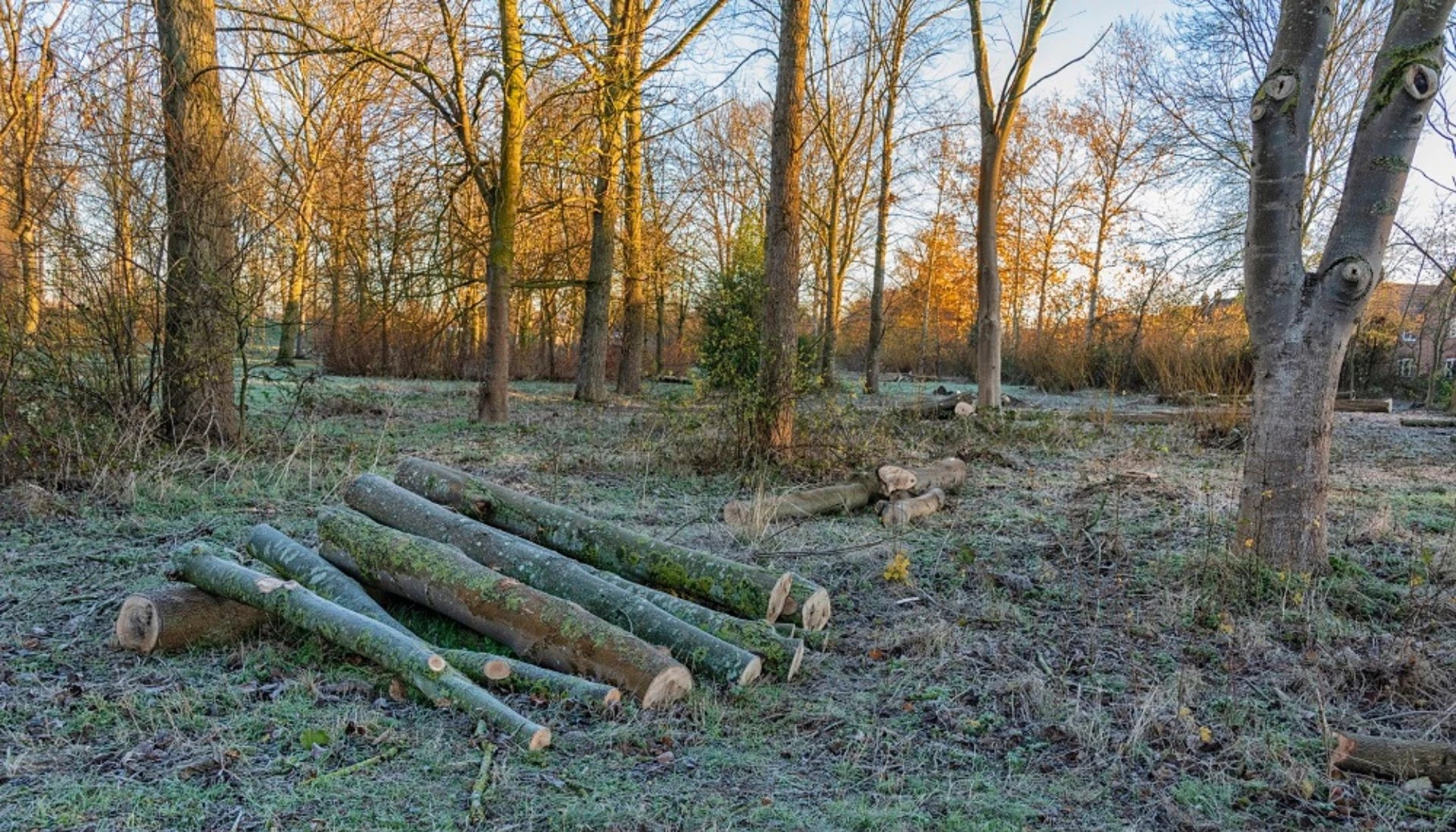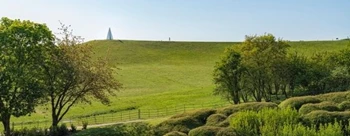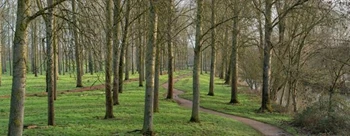Tree Thinning

Tree management, including thinning, is important for the health of our parks as it allows us to:
-
Improve the long-term development of plantations and woodlands
-
Diversify habitats for wildlife
-
Retain and maintain good, properly positioned and healthy trees
-
Remove any trees that are poorly formed, diseased or pose safety concerns.
Of the 6,000 acres of land that The Parks Trust manage, over 800 acres are plantations that are relatively new and still developing, with many of these being under 40 years old. When Milton Keynes was first built, it was planted with a lot of trees and shrubs with the short-term objective of obtaining an instant ‘greening’ effect; this sometimes involved planting 5 trees and shrubs to a square metre! The planners of the city did this to encourage people and businesses to move into the new city that, at the time, was one of the biggest building sites in Europe.
Challenges of High-Density Planting
While successful in achieving the short-term objectives, this strategy for planting was not sustainable in the mid to long-term. The high-density planting means that trees quickly compete with one another to grow towards the light, and if not managed properly by thinning, the trees will put all their energy and resources into growing upwards. In time, this makes the stems weak, and eventually, the trees start to bend and blow over - not something we want to happen in an urban setting!
Why is Tree Thinning Important?
By thinning the trees out, we can ensure the best trees are retained and that they have the room to develop into well-balanced, healthy trees. This is a similar concept to seeds in a seed tray but on a bigger scale. If a proportion of those seedlings are not removed, they will all over-reach themselves and start to collapse!
In addition to the concern regarding the safety and longevity of the trees, thinning allows much more diversity in the landscape. If we leave these trees untouched on the plantation, they will form a dense upper layer of vegetation. This will block out light to the lower shrub and herbaceous layers, which will, over time, cause them to weaken and die. We’re finding that as the trees mature and the understorey develops, a lot of the plantations are now making the transition to young woodlands. Within these woodlands, we want to encourage a shrub understory to allow for more biomass to be present in the area and for species such as Hawthorn and Hazel to flourish as they are exposed to higher light levels. Wildlife will also benefit from the vibrant understorey. As it develops, scrub and thicket become a source of food and shelter for all sorts of wildlife, including small mammals and birds. The herbaceous layers offer further habitat for invertebrates, including pollinators such as bees.
There are also times we need to remove trees which grow along the boundaries of our land. This work allows us to take care of borders by removing trees which could cause a nuisance to neighbours by overhanging vegetation or liabilities from future subsidence claims.
Managing Trees for the Future
During our thinning work, we work hard to ensure there is a real diversity of species which is important during this time of climate change. This will help us combat the various pests and diseases that are often associated with warmer climates, which can target individual tree species, for example, Ash Dieback. Some may think that thinning reduces the amount of biomass, but if completed in the right intensities, in the mid to long-term this is not the case. The remaining trees will grow into the space offered and their crowns and foliage will become more spreading and denser, rather than producing foliage that is found at just the top sections of a compressed, non-thinned tree. As mentioned above, the extra light available to a well-managed woodland will allow the understorey to develop, which also offers more biomass development opportunities.
Our Aim of Tree Thinning
Overall, the aim is to create well-spaced and structured woodlands that have many foliage layers, encouraging a diversity of healthy, well-formed trees and understoreys. As the plantations establish, they will have received three or so thinning treatments over a 30-year period. The intensity of management will then slow down, and we will focus less on removing the upper canopy trees and start paying more attention to the understorey, where coppicing (another management technique) and areas of non-intervention will be put in place.
The tree management techniques we employ are recognised forestry practices that are implemented country-wide. We have highly qualified and experienced tree and forestry managers within our team to undertake the work. We also work closely with the Forestry Commission and have a 10-year tree management plan (with required felling licenses) that is vetted and approved by the Forestry Commission.











